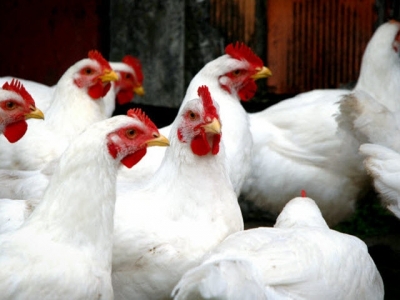Nutrition innovation to help poultry producers meet antibiotic reduction goals

BANKGOK, THAILAND—As global health authorities and policymakers confront the escalating threat of antimicrobial resistance, innovations in sustainable poultry nutrition offer producers tools to improve bird performance and productivity without antibiotics
During the 11th Asia Pacific Poultry Conference (APPC), Professor and Dr Leo den Hartog, director of R&D at Trouw Nutrition and a professor in Sustainable Animal Nutrition in Production Chains at Wageningen University, delivered the keynote address. In his remarks, Dr Den Hartog demonstrated that a dramatic reduction in antibiotic use in food production can be achieved via an integrated, multi-stakeholder approach based on feed, farm and health strategies.
Increased production poses challenges: Poultry meat production is expected to increase 72 percent between 2017 and 2050. Meeting the world’s growing demand for poultry will require solutions that are environmentally sound, socially responsible and economically viable. The expression of the full genetic potential of farm animals worldwide is negatively affected by suboptimal farm conditions and health status. Animal productivity can be reduced by an average of 30 to 40 percent due to these reasons. Therefore, a tremendous opportunity exists to improve poultry performance.
Antimicrobial resistance - a global threat: At the same time a global increase in demand for poultry meat is anticipated, an escalating global health threat means producers must look for alternatives to antibiotic growth promoters (AGPs), often used to improve animal production efficiency. Antibiotic use in animal production is expected to rise 67 percent by 2030, and to nearly double in Brazil, Russia, India, China and South Africa. If no additional restrictions on AGPs are implemented, the potential for antimicrobial resistance (AMR) to proliferate will continue to rise. By 2050, the World Health Organization (WHO) predicts the annual death toll attributable to AMR could reach 10 million.
A toolkit to improve performance and productivity - insights from the Netherlands: During his keynote remarks at APPC, Dr Den Hartog reviewed how the Netherlands implemented a multi-stakeholder programme that reduced antibiotic use in broiler production 72 percent between 2009 and 2016 without compromising performance. The effort’s success is attributed to the integration of feed, farm and health management. Collectively, these measures supported birds’ intestinal health by preventing the intake of specific pathogens, managing microbiota, improving gut integrity and supporting immunomodulation.
Dr Den Hartog presented a feed additive “toolkit” combining targeted feed and drinking water additives (DWAs) to achieve desired effects. “The starting point of any antibiotic reduction programme is assurance of feed and drinking water quality,” he noted. Combining targeted DWAs supports gut health and immune modulation. For example, Dr Den Hartog showed how applying formic, propionic, and lactic organic acids and medium chain fatty acids derived from plant oils reduces bacterial activity and helps balance microbiota. Controlled release butyrate in combination with specific phytochemicals increases mucus production and supports epithelial cell proliferation and modulation of the gut-associated immune system. “Combining feed additives with different functions and mode of action is a promising strategy not only to support animals in an AGP-free feed programme, but is also expected to have prophylactic effects,” said Dr Den Hartog.
Beyond feed additives and DWAs, Dr Den Hartog noted opportunities to further support animal health without antibiotics, including strategically managing dietary nutrients and ingredients, such as increasing poultry diet fibre and modifying feed particle size. Combining these types of solutions with ideal farm management will ultimately help poultry producers reduce antibiotics while maintaining animal performance.
Related news
 Layers protected by lasers
Layers protected by lasers Poultry farmers all around the world go to great lengths to protect their birds from avian influenza. In many countries there are mandatory
 Salmonella biofilms resist disinfectants in poultry processing
Salmonella biofilms resist disinfectants in poultry processing Salmonella biofilms aren’t as pathogenic as free-floating Salmonella particles but, nevertheless, are significant contributors to contamination in food
 Single vaccine developed for avian flu and duck enteritis
Single vaccine developed for avian flu and duck enteritis UK, 28 March 2018 - The Pirbright institute has developed a single vaccine for both avian flu and duck enteritis